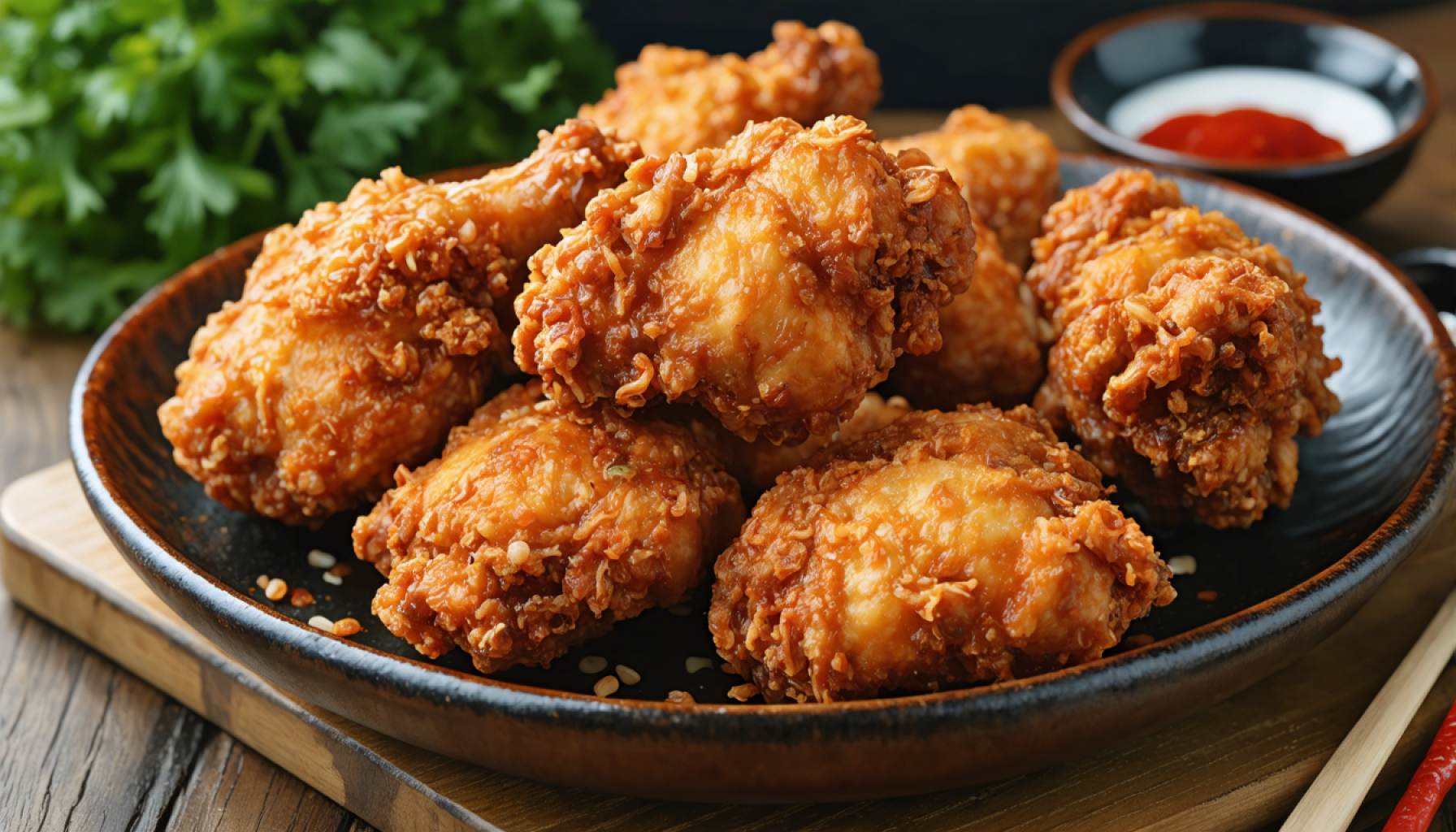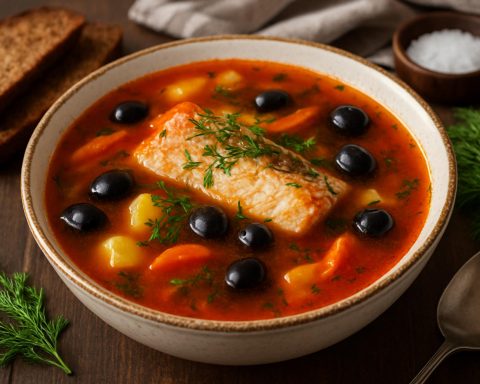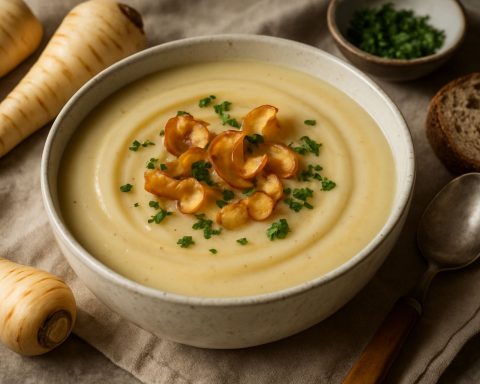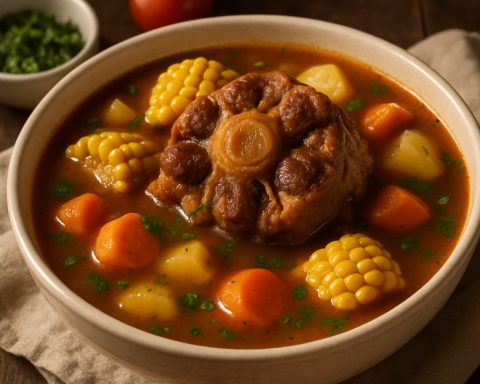Korean fried chicken, or friterad kyckling koreansk, has taken the world by storm with its addictive crunch and bold flavors. Originating in the bustling streets of South Korea, this dish is a modern twist on a classic favorite. Perfectly balancing a crispy exterior with juicy, tender meat, Korean fried chicken is often coated in a sweet and spicy glaze that dances on the taste buds. It’s a dish that shines on special occasions and casual gatherings alike.
Ingredients:
– 1 kg chicken wings or drumettes
– 1 cup all-purpose flour
– 1 cup cornstarch
– 1 teaspoon salt
– 1 teaspoon black pepper
– 1 cup buttermilk
– Oil for frying
For the sauce:
– 1/4 cup soy sauce
– 1/4 cup honey
– 2 tablespoons gochujang (Korean chili paste)
– 2 tablespoons rice vinegar
– 1 tablespoon minced garlic
– 1 tablespoon sesame seeds
Instructions:
1. Marinate the Chicken: In a large bowl, combine chicken, buttermilk, salt, and black pepper. Let it marinate for at least 30 minutes.
2. Coat the Chicken: In a separate dish, mix flour and cornstarch. Dredge marinated chicken in the mixture until well-coated.
3. Fry the Chicken: Heat oil in a deep fryer to 175°C (350°F). Fry chicken in batches for 8-10 minutes until golden brown. Let them drain on paper towels.
4. Make the Sauce: In a saucepan over medium heat, combine soy sauce, honey, gochujang, rice vinegar, and garlic. Let it simmer until thickened.
5. Coat in Sauce: Toss fried chicken wings in the sauce until fully coated. Garnish with sesame seeds before serving.
Enjoy your burst of Korean flavors with every delightful bite!
The Health Benefits of Korean Fried Chicken and Its Ingredients
Korean fried chicken, or friterad kyckling koreansk, has captivated taste buds worldwide with its irresistible crunch and dynamic blend of flavors. Hailing from the vibrant culinary streets of South Korea, this dish elevates traditional fried chicken by skillfully balancing a crispy crust with tender, juicy meat. The accompanying sweet and spicy glaze further enhances its appeal, making it a favorite for both special occasions and casual get-togethers. While indulging in this delicious meal, it’s worth exploring the potential health benefits of its ingredients and the dish as a whole.
Health Benefits of the Ingredients
Chicken:
The core of this dish, chicken, is a high-protein ingredient that supports muscle maintenance and growth. It provides essential nutrients such as B vitamins, phosphorus, and selenium. Consuming chicken in moderation as part of a balanced diet can help promote satiety and support overall health.
Buttermilk:
Often used as a marinade, buttermilk adds flavor and tenderness to the chicken. It contains probiotics, which are beneficial for gut health, aiding in digestion and boosting the immune system. Additionally, it’s a source of calcium and potassium, important for bone health.
Soy Sauce:
A staple in many Asian dishes, soy sauce contributes a savory depth to the sauce while offering amino acids beneficial for protein synthesis. Look for low-sodium options to manage sodium intake while still enjoying its rich umami flavor.
Honey:
Used as a natural sweetener in the glaze, honey contains antioxidants that help combat oxidative stress. It provides a natural energy boost and can support a healthy immune response due to its antimicrobial properties.
Gochujang (Korean chili paste):
This spicy, fermented paste is rich in flavor and boasts potential health benefits. It contains capsaicin, known for its metabolism-boosting and anti-inflammatory properties. The fermentation process also introduces probiotics that aid digestive health.
Rice Vinegar:
Rice vinegar adds acidity and brightness to the sauce. It may aid digestion and support heart health by containing acetic acid, which can help improve blood sugar control.
Garlic:
Garlic infuses the sauce with a pungent aroma and has numerous health benefits. It contains allicin, known for its immune-boosting, anti-inflammatory, and cardioprotective effects.
Sesame Seeds:
Garnishing with sesame seeds adds more than just a nutty flavor and pleasing texture. These seeds are a good source of healthy fats, fiber, and minerals like magnesium and calcium, contributing to bone health and metabolic function.
Conclusion
While Korean fried chicken is a fried delicacy, its thoughtfully selected ingredients offer a blend of essential nutrients that can support health in various ways when enjoyed as part of a balanced diet. Moderation is key, and with such vibrant flavors, even small portions can provide satisfaction. So, relish the dynamic experience of Korean fried chicken, embracing both its culinary allure and its potential health benefits.
Flavor Fusion Frenzy: Discover the New Trends in Korean Fried Chicken
Korean fried chicken, renowned for its irresistible crunch and tantalizing flavors, continues to evolve, introducing innovations that have captured the culinary world’s attention. As consumers seek bolder and more diverse taste experiences, this beloved dish expands its horizons beyond the traditional sweet and spicy profiles that first gained international acclaim.
Innovations Expanding the Flavor Palette
1. Unique Flavor Infusions:
Chefs around the world are experimenting with new sauce combinations using unexpected ingredients such as yuzu, truffle, or even Thai green curry paste. These innovative twists provide fresh and exciting flavors while maintaining the hallmark crispy texture of Korean fried chicken.
2. Health-Conscious Alternatives:
There’s a growing trend towards offering healthier versions of this indulgent dish. Air frying and baking have become popular methods for reducing oil content without sacrificing the beloved crunch. Alternative coatings, such as gluten-free flour and nut-crusts, cater to dietary restrictions while still delivering delicious results.
Market Analysis and Sustainability Impact
1. Global Market Trends:
The rise in popularity of Korean fried chicken has sparked a surge in global franchises and local establishments adopting and adapting the dish to fit regional palates. This expansion is particularly notable in North America and Europe, where the integration of local ingredients creates delightful regional variations.
2. Sustainable Practices:
Increasingly, restaurants are sourcing chicken from farms that prioritize ethical and sustainable practices. The emphasis on organic ingredients and environmentally conscious farming aims to reduce the carbon footprint and promote more sustainable dining.
Predictions for the Future
1. Integration with Technology:
Predictions suggest that artificial intelligence and robotics might play a role in perfecting the consistency of flavor and cooking times in larger chains. The emphasis on precision could elevate how quickly and efficiently restaurants meet high demand.
2. Customizable Dining Experience:
Future trends indicate a move toward technology-driven customization, where patrons can mix and match different sauces, coatings, and sides, creating a bespoke dining experience that caters to individual tastes.
FAQ: Your Korean Fried Chicken Questions Answered
Q: What is gochujang and why is it essential in Korean cuisine?
A: Gochujang is a fermented Korean condiment made from red chili, glutinous rice, fermented soybeans, and salt. It’s prized for its deep, spicy-sweet flavor and plays a crucial role in adding depth and complexity to numerous Korean dishes, including fried chicken.
Q: Can I make Korean fried chicken with other meats?
A: Absolutely! While chicken is traditional, you can apply the same techniques and seasonings to other meats or even tofu for a vegetarian option.
For more on Korean cuisine and where to find authentic fried chicken, visit Korea Travel News.
Explore these innovations and embrace the dynamic world of Korean fried chicken as it continues to captivate taste buds around the globe.








